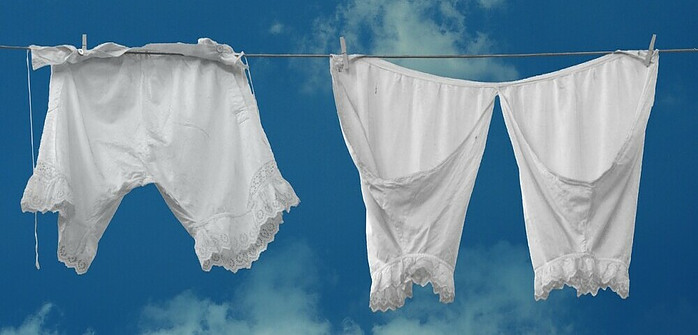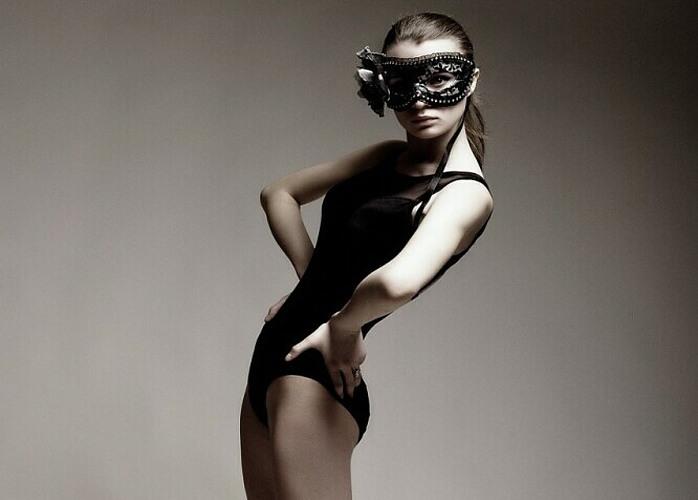
Hey there! History time. Let’s get straight to the point: crotchless underwear has a much longer and more diverse history than many people realize. This isn’t just about a modern provocative fashion statement; it’s also about functionality and cultural practices that date back centuries.
First up, you’re going to find out about the true essence of crotchless underwear. It’s a type of undergarment that’s missing a fabric piece in the crotch area. While some might assume it’s a recent risque invention for intimate purposes, its origins are rooted deeply in history for quite practical reasons.
The geographical origins and cultural contexts of crotchless underwear span various continents, with evidence pointing to its use in Asia, Europe, and the Middle East. It’s fascinating to note that the design served different purposes, conforming to the climate, social norms, and levels of sophistication in garment making.
Crotchless underwear served a dual role, balancing practicality and sensuality. In times when layer upon layer of clothing was the norm, and restroom facilities were less accessible, this design was a clever solution. Yet, it also played a role in the private lives of individuals, hinting at an early understanding of the need for garments that catered to intimacy.
That’s the groundwork for understanding the original use of these undergarments. But as we move forward into the next section, keep an eye on how this simple piece of clothing evolved over time, not just functionally but also as a reflection of the society’s pulse.
Cultural Evolution: Crotchless Underwear Through the Ages
Crotchless underwear hasn’t always been viewed through the same lens as we see it today. It’s had quite the roller coaster ride through history, with societal norms heavily influencing its acceptance and usage.
It isn’t a simple tale of utility turning into taboo, however. The shift is complex, tied deeply to the ebb and flow of social, religious, and cultural tides. For a time, practicality took precedence, as crotchless designs provided a functional benefit, especially in the days of less flexible clothing and cumbersome layers.

Fast-forward a few eras, and the conversation around crotchless garments veers into the realms of scandal and allure. In the Victorian era, which is often associated with prudishness, such underwear took on secretive, if not outright illicit, connotations. Despite the outward appearance of morality, there’s evidence to suggest that crotchless designs were employed to navigate the maze of layered petticoats and corsets. There is even a pair of Queen Victoria’s split (crotchless) knickers that went up for auction about 10 years ago.
Specific documentation regarding the early use of crotchless underwear is scarce, but some historical garments, like certain styles of bloomers or pantaloons, may have incorporated open-crotch features for convenience. During the Victorian era (19th century), women’s undergarments underwent significant changes. Corsets, hoop skirts, and layers of petticoats were popular. (Previous to this most European women wore a chemise slip and NO underwear/knickers. Commando was in!) Some undergarments from this period, like split-crotch underwear, were designed to accommodate the complexities of the layered clothing. The split design allowed for ease of use for elimination/bathroom purposes and of course intimacy. Not having to disrobe the many layers was helpful, as you can see!

In the early to mid-20th century, as fashion evolved and women’s clothing became less restrictive, underwear styles also changed. Pin-up culture and burlesque shows in the mid-20th century often featured lingerie with playful and provocative designs, including crotchless panties.
The revival of crotchless underwear in fashion cycles coincided with various liberation movements, seeing peaks in popularity every few decades. They became emblematic of the shift towards more open dialogue about sexuality and personal freedom. As theater and burlesque grew in popularity, crotchless designs were often right at home on stage, adding a touch of daring to performances.
The influence of art movements on underwear design cannot be underestimated. During periods like the Renaissance, the Rococo, and the emergence of modernism, we saw fashion, and by extension, undergarments, evolve to reflect the changing artistic ideals. This included a flirtation with more revealing and provocative designs, including lingerie.
As the times changed, so did the cultural context of crotchless underwear, transforming from necessity to statement, and from taboo to an accepted—if not completely mainstream—part of fashion and sexuality.

Modern Manifestations: Crotchless Underwear in Contemporary Society
Turning the pages of history and stepping into today’s era, crotchless underwear has donned a new avatar. What used to be a garment exclusive to practical uses has evolved into a symbol of personal expression and sexual empowerment. It’s striking how modern design has transformed these pieces to reflect current cultural and social waves, particularly the body positivity and sexual liberation movements.
Beyond cultural shifts, innovation in design and production has further cemented crotchless underwear’s place in contemporary wardrobes. From silky fabrics to intricate laces, the variety of materials and technology involved ensure both comfort and aesthetics. High-tech production methods mean that today’s crotchless garments aren’t just about looking good; they’re engineered to feel good, too.
In the limelight, celebrities and influencers showcase crotchless designs, signaling a broader acceptance and often causing a surge in their popularity. Every time a well-known personality dares to embrace such daring fashion, it nudges the envelope of mainstream clothing norms a little further.
The digital age has also propelled the proliferation of crotchless underwear, with online retail providing a discreet and diverse shopping experience. This anonymous accessibility has created a boom in the market, with customer demographics expanding beyond any traditional confines. Detailed product information, customer reviews, and the privacy offered by online shopping have helped demystify these garments and make them more accessible and approachable.
Now, in our contemporary times, crotchless underwear is often considered a symbol of sensuality and is commonly associated with lingerie designed for romantic or intimate occasions. Fashion designers and lingerie brands continue to produce various styles of crotchless panties, catering to different tastes and preferences. There is so much to choose from currently. From teddy’s, bodysuits, catsuits and underwear the whole crotchless realm is the biggest it’s ever been.

It’s important to note that while historical documentation may be limited, the evolution of crotchless underwear is intertwined with broader changes in fashion, social norms, and perceptions of sexuality. Specific citations for this topic might be challenging due to the nature of the subject and the lack of comprehensive historical records on underwear styles. The overview provided here is based on general historical knowledge and an understanding of fashion trends.
Social Sensitivities: Balancing Historical Insight with Contemporary Considerations
Crotchless underwear has journeyed through centuries, not just as a sartorial choice but also as a marker of cultural and societal evolution…and can we now say a sexual revolution? While the idea originated from practicality, it finds more erotic undertones today. It’s crucial to acknowledge the delicate balance required when discussing such topics today.
It’s important to note that while historical documentation may be limited, the evolution of crotchless underwear is intertwined with broader changes in fashion, social norms, and perceptions of sexuality. Specific citations for this topic are challenging due to the nature of the subject and the lack of comprehensive historical records on underwear styles. (The overview provided here is based on general historical knowledge and an understanding of fashion trends.)
The evolution of gender norms has certainly widened the lens through which we view personal apparel choices. It’s important to champion that diverse styles, including lingerie, can be embraced by anyone, irrespective of gender, as a celebration of individuality and empowerment, rather than purely through the gaze of eroticism.
As we venture into the future, it’s exciting to anticipate the innovations around crotchless designs. Expect to see an increased emphasis on sustainable materials, size inclusivity, and fashion statements that challenge traditional norms. This continued evolution will not only mirror our current values as a society but also echo the pivotal role such garments have played throughout history.


